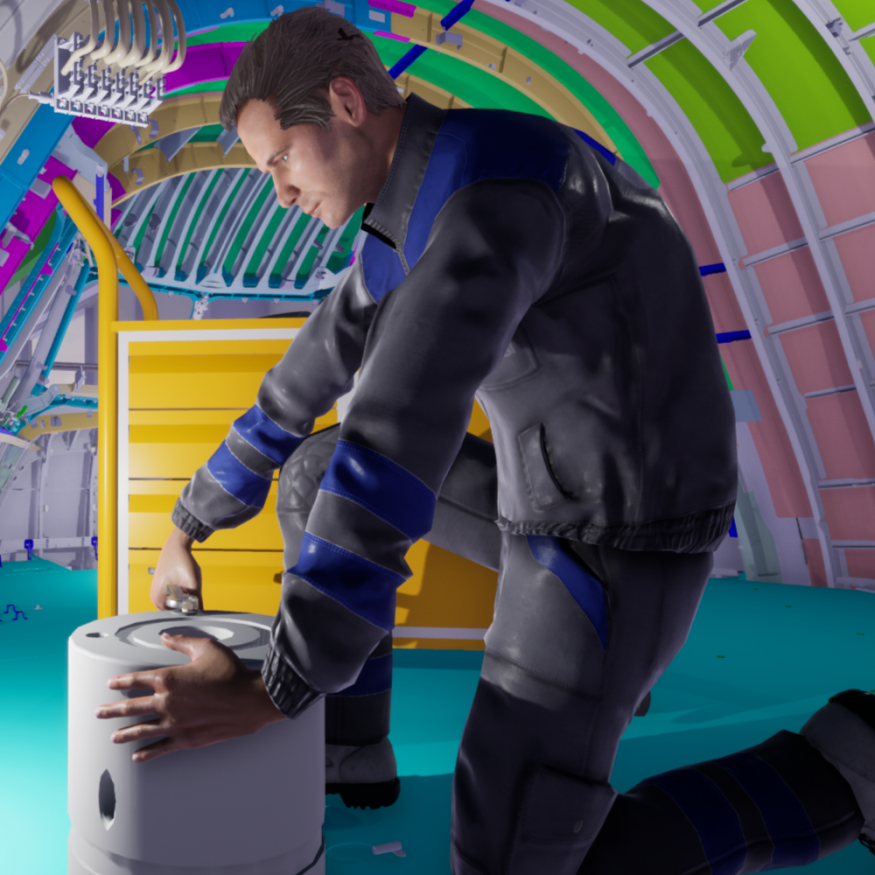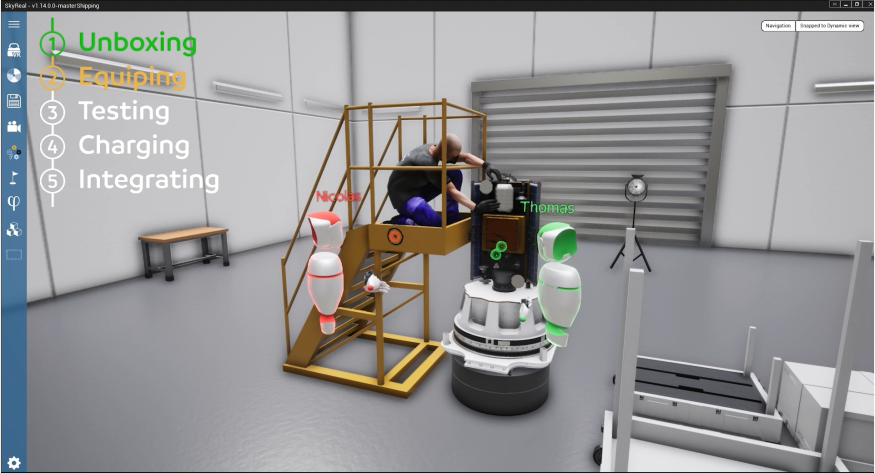Virtual reality opened news perspectives in many domains. Time saving, real simulations at lower costs, R&D and production accelerated process, VR are now able to answer many sectoral issues. They also allow a closer link between project team wherever they are in the world. An important step has been crossed for many companies thanks to VR.
At SkyReal we consider that collaboration in a virtual universe is an evolution which erase a frontier between real and virtual world creating meetings “IRL” in “VR”. The hashtag #IVRL we created means: In Virtual Real Life.
The simulations “IVRL” (In Virtual Real Life) permitted by virtual collaboration expand and extend the link between individuals reflecting the creation of a common project of any kind.
VR collaboration enable exchanges as they are in real life erasing the barrier made by distance between two work teams. The headset gave way to the VR helmet, allowing interactions in a total immersive virtual reality in which every human sensorial attributes are accurately replicated.
VR collaboration appropriate to numerous domains
Virtual environments, as SkyReal create them for instance, are designed to enable meetings between two or more individuals (hundreds theoretically) as real as possible.
It is then imaginable to put a team on a non existing project yet or under construction in which the lines are not clearly defined.
It is possible to find collaborators, customers, suppliers or partners to advance on a project under design. This one can be of diverse nature and concern the validation of an architectural plan of a hotel or the design of a car for example.
It is also possible to organize virtual visits of a building to validate a stage of advancement of the design of a project (“review”).
The VR collaboration will bring together engineers on preliminary design phases of an aircraft engine or even satellite. Conduct jointly a design review, validate the various phases of integration or perform tests of the proper functioning of a system becomes possible.
Once entered into a virtual simulation, it is possible to project in quite improbable environments like the ISS space station, or in an aquatic environment with similar conditions to that of an oil platform.
Faithful reproduction of sensory factors
The entry into a virtual collaborative 3D environment allows all users to find the main sensory attributes they use everyday, in the real world.
Several individuals will therefore be able to see each other, to talk to each other, to point objects, to annotate information during a session, to draw diagrams, to move virtual objects, to modify the structure of objects, or to change the colors.
This list of interactions within a work session in virtual reality is not exhaustive as the possibilities are extensive.
VR training to perform a task in a virtual universe, remotely learning maintenance teams like those of an Airbus in different countries, to carry out a complex technical task, is now completely achievable thanks to VR collaboration.
The pre-definition of virtual reality scenarios applicable to large-scale projects will open up a field of action that can become a short-term standard or a collaborative working tool essential to as those which became webEx and Skype for example. Virtual collaboration simulations lead to huge gains of time in design and production phases as key factors in the evolution of project management.




